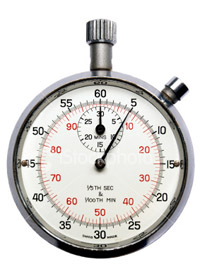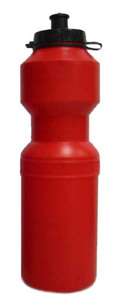Sports nutrition tips – when to eat

Okay, you can see the article below with tips on what to eat, but perhaps the toughest part is figuring out when to eat. It’s tough because it’s going to be more personal and there are fewer general rules for you to follow. You really need to listen to your body to get it right in this area, and it may take a lot longer to get it right for you. But, let’s see if we can give you some good guidelines to get started…

Eat something about 1-2 hours before exercise
Probably the biggest and silliest mistake made by most people I have coached is not eating enough to fuel their activity. Maybe they got into triathlon or other sports because they want to lose weight and so they think, rather simplistically, that they should eat much less and exercise much more. It sort of makes sense on paper, but if you wonder why you are dragging your ass around at the gym or on the bike or in the pool, then it’s probably because you can’t perform well on an empty stomach. Simple as that. You need to eat. Just eat well. See the article below “-what to eat”.
If you are exercising later in the day, then work backwards from your planned training time and get in a decent meal – not a huge meal – so you have enough food to fuel your session, but make sure that your stomach will be comfortable by the time you exercise. Some people will need more time before exercise than others. And allow for whatever digestive responses may occur when you eat something substantial, so that you are not always left feeling desperate to find a toilet in the middle of your training session.
If you are really serious about your training and you are training early mornings, then make it a part of your routine to get up at least an hour earlier to eat something. It may not always be easy or convenient, or possible, but you might also be surprised to see how much of a difference it can make if you try it out some time. A little advanced planning can really help, too. I like to soak some oats, yogurt, fruit and honey all together in a bowl over night, so when I get up early the next morning it’s ready and waiting for me.
It also depends on what sort of exercise you plan to do and when. For example, if I am going out for a long bike ride early in the morning, I find that my stomach can tolerate a lot more food intake closer to the time of setting off on the ride than, say, if I were going off on a long run or a hard swim session.
Drink something 15-30 minutes before exercise
This is true throughout the day, but especially true if you are in the habit of getting up early to train first thing in the  morning. It’s just as silly to train on an empty stomach first thing in the morning as it is at any other time of the day, but I’m not going to preach too much at you and say that you need to get up at 5am to eat breakfast every time you want to run at 6am. Perhaps you can get up just 15 minutes earlier and have something to drink.
morning. It’s just as silly to train on an empty stomach first thing in the morning as it is at any other time of the day, but I’m not going to preach too much at you and say that you need to get up at 5am to eat breakfast every time you want to run at 6am. Perhaps you can get up just 15 minutes earlier and have something to drink.
Smoothies, yogurt drinks, milk, chocolate milk, soy milk, fresh-squeezed fruit juices, or sports drinks are all decent drinks to get in you, and can provide some of the nutrients you will need for your exercise. Again, make sure you are well-hydrated, but also make sure you are not over-doing it and bursting for a pee in the middle of your session.
Drink while you are exercising
Any activity that you do that elevates your heart rate and has you sweating, even a little bit, will be aided by continuously drinking throughout. Little sips and often. Not waiting until you are thirsty. You know the drill (if you don’t, then read the article below). And, if it is a reasonably high intensity session, then you probably want to drink more than just water. A sports drink or anything with a little sugar in it and some salt will do. You need to replenish energy stores and lost salts and minerals as much as you can while you are training.
One more thing: you need to drink even when you’re not aware that you’re sweating. For example, I sometimes see people swimming quite hard or long swim sessions without anything to keep them fuelled up during their session. People! You do sweat when you swim, you just don’t notice it! And, if you are training in the winter time when it is cold out and you are not sure if you are sweating, you probably are. So drink then, too.
Eat and drink when you are done
Your muscles will thank you, your joints will thank you, and you will aid your body’s recovery if you can get some carbohydrates to replace lost energy stores and some protein to help rebuild muscle tissue. Despite what some may claim, there is not yet any scientific basis for a specific ratio of carbs and proteins (4:1, I’m talking about you) or an “optimal window” of recovery (that whole 30-minute business is anecdotal, which is perfectly fine, but not scientifically proven). The only thing that has been scientifically proven is that you should eat “some carbohydrates and some protein” after exercise to aid recovery. So, that must be why I always crave a peanut butter and nutella sandwich after a training session. On wholemeal bread, of course. With some soy milk. Yep, that’s my favorite post-workout snack.
The longer your activity, the more you will need to replenish your body and keep eating and drinking steadily. Not eating a huge meal, and not using a long tough session as an excuse to binge on chocolate and potato chips and ice cream. Just keep eating well, little and often.

Leave a comment